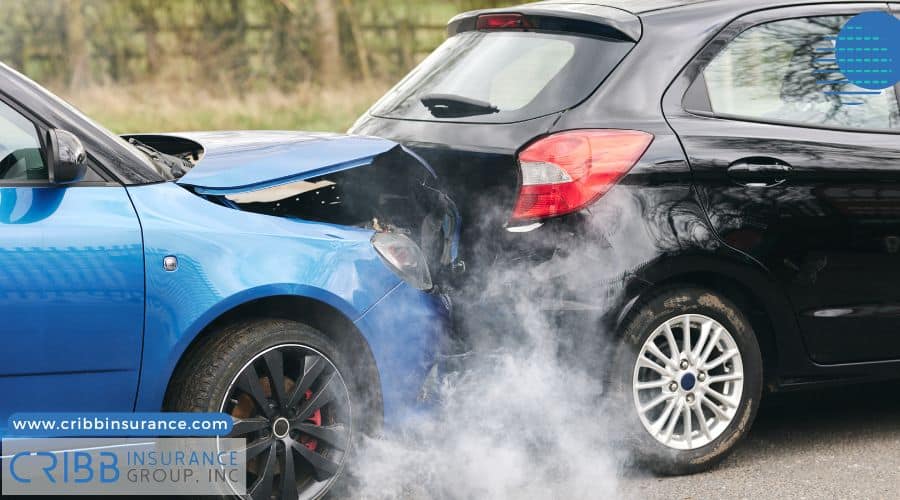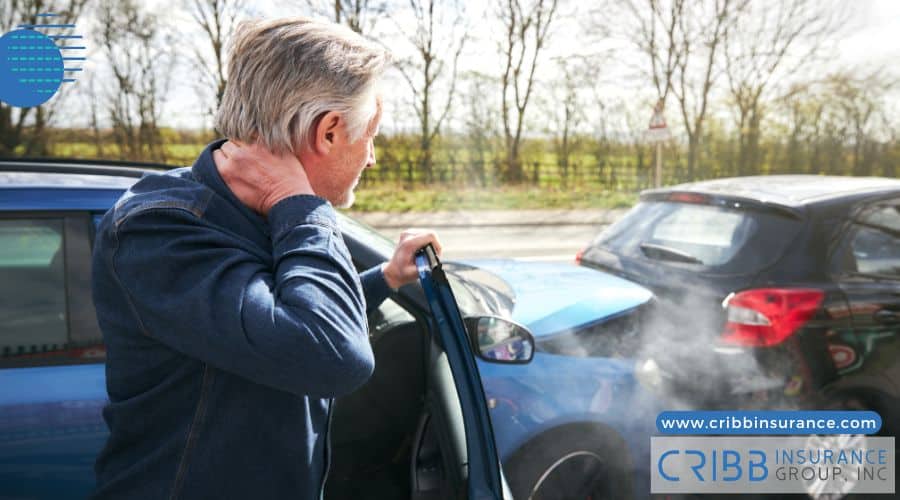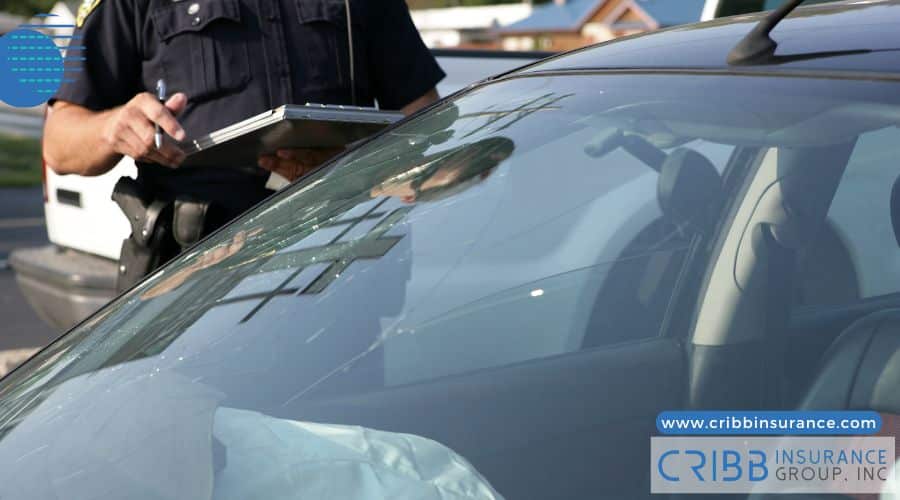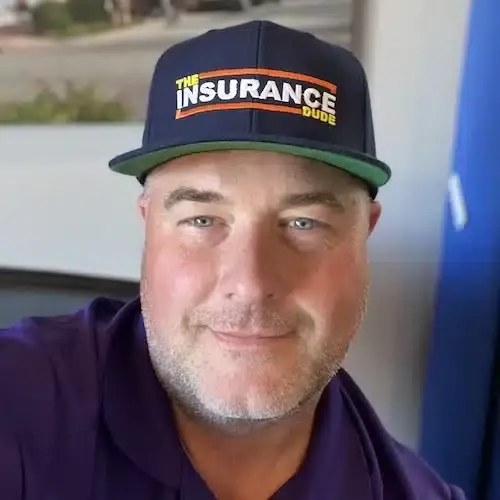Rear-end collisions are among the most common car accidents, often occurring in high-traffic areas, stoplights, or intersections. Many drivers are unsure of what to do after being rear ended, especially if they were getting rear ended while stopped. Taking the right steps can lead to insurance issues, injury complications, and legal disputes.
This guide explains everything you need to know about the most common causes of rear-end crashes, immediate actions, how to handle insurance claims, and when to seek medical attention. Understanding your legal and financial rights after an accident can help you protect yourself and recover properly.
What Causes Rear End Collisions at a Stop
A rear-end collision occurs when a driver fails to stop in time, crashing into the vehicle ahead. These accidents are especially dangerous when the front car is stationary, as it cannot reduce the impact. Understanding the most common causes of getting rear ended while stopped can help drivers take precautions and stay alert in high-risk areas.
Common Reasons Drivers Fail to Stop in Time
Most rear-end crashes happen due to driver negligence, mechanical failures, or poor road conditions. Here are the most common reasons why rear-end collisions occur:
- Distracted Driving: Looking at a phone, talking to passengers, adjusting the radio, or eating can take attention away from the road. Even a few seconds of distraction can prevent a driver from braking in time.
- Tailgating: Following too closely does not give drivers enough reaction time to stop when the front car brakes.
- Speeding: Driving over the speed limit makes slowing down or stopping safely in traffic harder.
- Brake Failure: Worn-out or faulty brakes reduce stopping power, increasing the crash risk.
- Poor Weather Conditions: Rain, ice, or fog can reduce visibility and make roads slippery, delaying reaction times.
- Aggressive Driving: Sudden lane changes, cutting off other vehicles, or road rage incidents increase the risk of rear-end collisions.
Even cautious drivers can be victims of rear-end crashes caused by careless motorists. Understanding these risks can help you anticipate potential dangers on the road.

High-Risk Locations for Rear End Crashes
Some locations pose a higher risk for rear-end collisions due to frequent stopping, merging traffic, or unpredictable road conditions. Areas with increased rear-end crash risks include:
- Stoplights and Intersections: Sudden stops at red lights can lead to rear-end crashes if the driver behind is not paying attention.
- Highways and Exit Ramps: Stop-and-go traffic makes it easy for distracted or speeding drivers to collide with stopped vehicles.
- School Zones and Crosswalks: Drivers may not anticipate sudden stops for pedestrians, increasing the risk of rear-end accidents.
- Parking Lots and Driveways: Frequent stopping, reversing, and limited visibility contribute to minor rear-end collisions.
- Construction Zones: Lane closures and reduced speed limits require sudden stops that inattentive drivers may not react to in time.
Being aware of these high-risk areas can help drivers stay extra cautious and reduce the chances of getting rear ended while stopped.
How Distracted Driving Increases Collision Risks
Distracted driving is one of the leading causes of rear-end accidents, as drivers take their eyes off the road for brief moments, reducing reaction time. Common distractions include:
- Texting or Using a Phone: Checking messages, making calls, or using GPS can prevent drivers from noticing brake lights ahead.
- Talking to Passengers: Conversations can shift focus away from the road, making it harder to react quickly.
- Adjusting the Radio or Navigation System: Taking hands off the wheel or eyes off the road, even for a second, increases crash risk.
- Eating or Drinking While Driving: Holding food or drinks can prevent quick braking in emergencies.
- Drowsy Driving: Fatigue slows reaction time and impairs judgment, making it harder to avoid rear-end collisions.
Avoiding distractions and staying alert can prevent accidents and reduce the likelihood of getting rear ended while stopped at traffic lights, intersections, or crosswalks.

What to Do Right After Being Rear Ended
The moments after a rear-end collision can be overwhelming, but taking the right steps will protect your health, legal rights, and insurance claim. Knowing what to do after being rear ended can help you avoid costly mistakes and ensure proper documentation for medical and financial recovery. Whether the accident results in minor vehicle damage or serious injuries, following these steps will help you handle the situation correctly.
Check for Injuries and Call for Help
Your health and safety should be the priority after getting rear ended while stopped. Even if the accident seems minor, some injuries may not be immediately obvious. Whiplash, back pain, and concussions can develop hours or even days later. Follow these steps to ensure safety after the crash:
- Assess Yourself and Passengers for Injuries: Check for neck pain, headaches, dizziness, or difficulty moving, which could indicate a concussion or spinal injury.
- Call 911 if Anyone Is Hurt: Emergency responders can provide medical care and create an official accident report.
- Move to a Safe Location if Possible: If the accident happens in the middle of the road and your vehicle is drivable, move to the shoulder or a safer spot to avoid further collisions.
- Do Not Ignore Minor Symptoms: Even if you feel fine, injuries like whiplash or muscle strains can appear later. Seek a medical evaluation as soon as possible.
If injuries aren’t documented at the scene, your insurance claim may be harder to prove if symptoms worsen. Always prioritize medical attention after a rear-end collision.
Gather Evidence at the Accident Scene
Proper documentation can help protect you from false claims and speed up your insurance process. Gathering key details at the scene will help you file a claim and prove what happened. Follow these steps to document the accident properly:
- Take Photos of the Vehicles: Capture license plates, damage, debris, and skid marks to show the impact.
- Get Witness Statements: If bystanders saw the accident, ask for their contact information and a brief statement.
- Record the Location and Conditions: Note road signs, weather conditions, and traffic signals that may have contributed to the crash.
- Write Down the Accident Details: Include the time, date, and sequence of events while it’s fresh in your memory.
- Request a Police Report: Officers will document who was at fault and provide a written report for insurance claims.
Strong evidence will help prove fault, prevent liability disputes, and increase your chances of a fair settlement.
Dealing with the Other Driver and Insurance
Exchanging the right information with the at-fault driver is critical for filing an insurance claim and getting compensation for damages. However, being cautious when speaking to the other driver is important. Follow these steps when dealing with the at-fault driver:
- Stay Calm and Be Polite: Avoid arguing or admitting fault, even if you think you may be partially responsible.
- Collect the Other Driver’s Information: Get their full name, phone number, license plate number, insurance provider, and policy number.
- Do Not Discuss the Accident Details Too Much: Stick to the facts when speaking to the other driver to avoid liability issues later.
- If the Other Driver Refuses to Provide Insurance: Call the police and report the situation immediately.
- Watch for Signs of an Uninsured or Underinsured Driver: If drivers try to leave or refuse to share insurance details, they may not have coverage.
Once you have all the necessary details, contact your insurance provider immediately. Delayed reporting can hurt your claim, so it’s best to start the process immediately.
Common Injuries After Getting Rear Ended
Even low-speed rear-end crashes can cause hidden injuries. Symptoms like whiplash or concussions may take hours or days to appear, so a medical checkup is essential. Knowing what to do after being rear ended includes understanding potential injuries and getting medical attention even if pain isn’t immediate. If you were getting rear ended while stopped, the sudden impact can put extreme force on your neck, back, and brain, leading to long-term pain and mobility issues.
Whiplash and Soft Tissue Injuries
Whiplash is one of the most common injuries from a rear-end collision. It happens when the head is suddenly jerked forward and backward, straining the neck muscles, ligaments, and spine. Even at speeds as low as 5-10 mph, whiplash can cause significant pain and stiffness. Symptoms of whiplash and soft tissue injuries include:
- Neck Pain and Stiffness: Limited movement and discomfort when turning the head.
- Shoulder and Upper Back Pain: Tightness and soreness in the upper body.
- Headaches and Dizziness: Pain at the base of the skull, lightheadedness, or blurred vision.
- Tingling or Numbness: Pinched nerves in the neck or shoulders.
- Fatigue and Difficulty Concentrating: Long-term whiplash can lead to cognitive issues and sleep problems.
Whiplash symptoms can take hours or days to develop, making early medical evaluation critical. Soft tissue injuries do not always show up on X-rays, so documenting pain and symptoms can help support an insurance claim.
Concussions and Head Trauma Risks
A rear-end collision can cause severe head injuries, even if there is no visible damage. The sudden jolt can force the brain to move inside the skull, leading to a concussion or traumatic brain injury (TBI). These injuries can have long-term effects, including memory loss, difficulty concentrating, and chronic headaches. Common concussion symptoms include:
- Persistent Headaches: Pressure or throbbing pain that does not go away.
- Nausea or Dizziness: Feeling unsteady, lightheaded, or disoriented.
- Blurred Vision or Sensitivity to Light: Trouble focusing on screens or bright lights.
- Confusion and Difficulty Remembering Events: Feeling foggy or forgetting what happened before and after the accident.
- Sleep Disturbances and Mood Changes: Irritability, anxiety, or depression.
If you experience any of these symptoms after getting rear ended while stopped, seek immediate medical attention. Concussions and brain injuries do not always show up on scans, but early diagnosis and treatment are crucial for recovery.
Back and Spinal Cord Injuries
The impact of a rear-end collision can compress the spine, leading to serious back pain, herniated discs, or nerve damage. Even a low-speed crash can cause long-term spinal issues that worsen over time. Common back and spinal cord injuries from rear-end accidents include:
- Herniated or Bulging Discs: The force of the impact can push spinal discs out of place, causing chronic pain and nerve compression.
- Lower Back Pain: Muscle strain and ligament damage in the lumbar region can lead to mobility issues.
- Pinched Nerves and Sciatica: Pain that radiates from the lower back down the legs due to nerve compression.
- Spinal Fractures or Misalignment: More severe crashes can cause broken vertebrae or spine misalignment, leading to long-term disability.
Back pain often gets worse over time, making early medical evaluation essential. Delaying treatment can lead to permanent damage, making it harder to prove the injury was caused by the accident.
Who Is at Fault in a Rear End Collision
Determining fault in a rear-end collision is crucial for insurance claims and legal disputes. In most cases, the rear driver is presumed to be at fault because traffic laws require drivers to maintain a safe following distance. However, there are exceptions where the front driver may share responsibility. Understanding how fault is determined can help you avoid liability issues and ensure fair compensation after getting rear ended while stopped.
Why the Rear Driver Is Usually Responsible
Traffic laws require drivers to leave enough space to stop safely, even if the car in front brakes suddenly. Insurance companies and law enforcement typically assume that the rear driver was either:
- Following too Closely (Tailgating): Not leaving enough stopping distance.
- Distracted While Driving: Failing to notice the vehicle ahead had stopped.
- Speeding or Driving too Fast for Conditions: Making it harder to stop safely.
- Brake Failure or Vehicle Malfunction: Mechanical issues that prevent stopping in time.
In most rear-end accidents, the rear driver is considered responsible unless they can prove that external factors contributed to the crash.
Situations Where the Front Driver May Be at Fault
Although the rear driver is usually presumed at fault, there are cases where the front driver shares responsibility or is entirely to blame. These include:
- Sudden and Unnecessary Braking: If the front driver “brake checks” the car behind them, it could be considered reckless driving.
- Broken or Non-Functioning Brake Lights: If the front car’s brake lights are out, the rear driver may not have had enough warning to stop.
- Reversing Into Another Vehicle: If the front car accidentally moves backward instead of forward, the rear driver is not at fault.
- Road Rage or Intentional Behavior: If a driver slams on their brakes deliberately to cause an accident, they may be held responsible.
- Multi-Car Pileups: In chain-reaction crashes, multiple drivers may be partially at fault, depending on the sequence of impacts.
If you were getting rear ended while stopped and the other driver is blaming you, a police report and evidence from the scene can help clarify who is at fault.
How Traffic Laws Determine Liability
Every state has specific laws governing rear-end collisions and fault determination. Insurance companies and law enforcement look at the following factors when deciding liability:
- Safe Following Distance: Did the rear driver leave enough space to stop in time?
- Traffic Signals and Stop Signs: Was the front driver legally required to stop?
- Witness Statements and Camera Footage: Did bystanders or dash cams capture the accident?
- Police Accident Report: Officers may issue citations that indicate which driver violated traffic laws.
Understanding these legal factors can help you build a strong insurance claim and protect yourself from wrongful blame. If there is a dispute over fault, consulting a personal injury lawyer may be necessary.

How to Handle Insurance After Being Rear Ended
Filing an insurance claim after getting rear ended while stopped can be confusing, especially if you’re unsure who pays for damages or whether your rates will increase. Knowing what to do after being rear ended can help you file a strong claim, avoid common mistakes, and get the compensation you deserve.
When to Call Your Insurance Provider
Report the accident to your insurance provider as soon as possible to protect your claim. Even if you’re not at fault, delays can affect coverage. Follow these steps to notify your insurer:
- Call Your Insurance Company: Call within 24 hours of the accident.
- Provide Basic Accident Details: Time, location, and a summary of what happened.
- Share Police Report Information: If officers were called, their report can help establish fault.
- Give the Other Driver’s Insurance Details: The at-fault driver’s provider will typically handle the claim.
- Mention Any Injuries: Early medical documentation supports your case even if they seem minor.
Avoid saying too much when speaking to insurance adjusters: Stick to the facts, and never admit fault, even casually. Adjusters look for ways to reduce payouts, so be careful with your wording.
Understanding Rear End Collision Coverage
Depending on your state laws and insurance policy, different types of coverage may apply after a rear-end accident. Key insurance coverages that may apply include:
- Liability Insurance (At-Fault Driver’s Policy): Pays for vehicle repairs, medical bills, and other damages if the rear driver is at fault.
- Collision Insurance: Covers repairs to your vehicle regardless of fault, but you may have to pay a deductible.
- Personal Injury Protection (PIP): Covers medical expenses for you and passengers, required in no-fault states like Florida.
- Uninsured/Underinsured Motorist Coverage: Protects you if the at-fault driver lacks insurance or has too little coverage.
- Medical Payments Coverage (MedPay): Helps pay for medical bills regardless of who is at fault.
If you have collision coverage, your insurance company may pay for repairs upfront and later seek reimbursement from the at-fault driver’s insurer. This process, called subrogation, can take time, so patience is needed.
What to Do If the Other Driver Has No Insurance
If the at-fault driver is uninsured or underinsured, you may still be able to recover damages through your own policy. Follow these steps if the other driver has no insurance:
- Check if you have Uninsured Motorist (UM) Coverage: This policy covers vehicle damage, medical expenses, and lost wages if the other driver lacks liability insurance.
- Use Collision Insurance for Vehicle Repairs: You’ll pay a deductible, but your provider will cover the rest of the repair costs.
- Consider a Personal Injury Lawsuit: If the driver has assets, you may be able to sue for damages, though collecting compensation can be difficult.
- Document Everything: Without an at-fault insurer to handle the claim, your own provider will require more evidence to process payments.
- File a Police Report: In many states, driving without insurance is illegal, and law enforcement may issue penalties that increase your chances of getting compensated.
If you live in a no-fault state, your own insurance covers your injuries regardless of who is at fault. However, property damage claims may still need to go through the at-fault driver’s coverage or your own collision policy.
Protect Yourself After a Rear End Collision
After a rear-end collision, taking the right steps protects your health, legal rights, and finances. These crashes often lead to hidden injuries and insurance disputes. Whether you were getting rear ended while stopped at a light or in traffic, following the right steps immediately after the accident can make a significant difference in the outcome of your claim.
Cribb Insurance Group Inc helps drivers in Bentonville, AR, navigate insurance claims, coverage options, and accident-related concerns. Having the right auto insurance policy can ensure financial protection in case of an accident. Understanding your coverage, filing a claim promptly, and knowing your legal options can prevent delayed payments, disputes, or low settlement offers.
Frequently Asked Questions
What happens if the driver who hit me flees the scene?
If the at-fault driver leaves the scene, it is considered a hit-and-run accident, which can complicate insurance claims. First, call the police immediately and provide details about the vehicle, license plate, or any identifying information. Your uninsured motorist (UM) coverage may cover damages if the driver is not found. Surveillance footage or witness statements can also help track down the responsible party.
Can I still file a claim if I don’t have visible injuries?
Yes, you can still file a claim even if you do not have immediate symptoms. Some injuries, like whiplash and concussions, can take days to appear. Seeking a medical evaluation as soon as possible creates documentation that can support your claim. If you delay medical attention, the insurance company may argue that your injuries were not related to the accident.
How long do I have to report a rear-end collision?
The timeframe for reporting a rear-end collision depends on state laws and insurance policies. In Arkansas, you typically have three years to file a claim for injuries and five years for property damage. However, most insurance companies require reporting within 24 to 48 hours of the accident. Failing to report in time may result in a denied claim.
What should I do if the insurance company denies my claim?
If your insurance claim is denied, carefully review the denial letter to understand why. You can file an appeal with additional evidence, such as medical records, accident reports, or witness statements. If the insurer still refuses to pay, you may need to consult a personal injury attorney or report the issue to the Arkansas Insurance Department.
Will a minor rear-end accident affect my car’s resale value?
Even if repairs are completed, a rear-end accident can lower your car’s resale value due to a negative history report. Potential buyers may be concerned about hidden damage, frame issues, or past repairs. Some insurance policies offer diminished value claims, which compensate for the loss in resale value. Keeping detailed records of repairs and inspections can help reassure buyers.
Get Expert Insurance Support for Rear End Accidents
If you have been involved in a rear-end collision in Bentonville, AR, Cribb Insurance Group Inc can help you understand your coverage, file a claim, and handle insurance disputes. Call (479) 273-0900 today to speak with a team that prioritizes your protection and financial well-being. Don’t wait, get the insurance support you need now.





